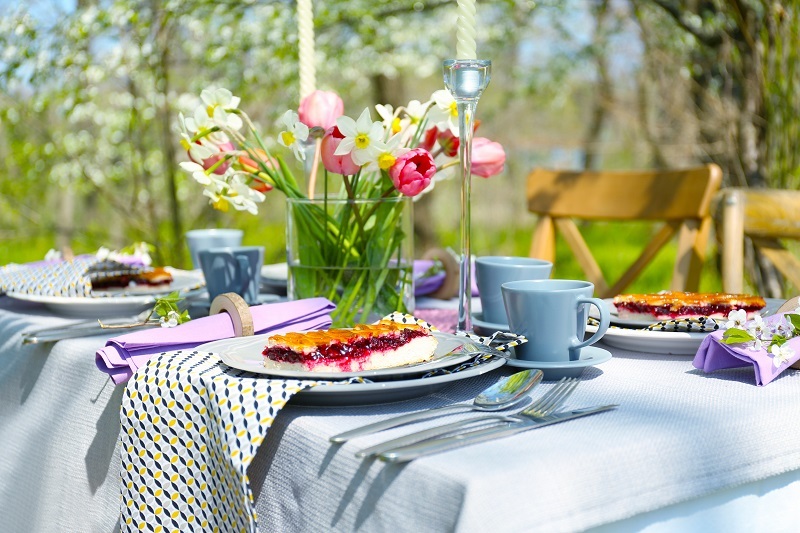Three Simple Approaches for Long-Lasting Flower Arrangements
Posted on 22/08/2025
Three Simple Approaches for Long-Lasting Flower Arrangements
Wouldn't it be wonderful if your fresh flower arrangements could last longer, retaining their vibrancy and beauty for days (or even weeks) on end? Flowers infuse any space with a sense of joy and elegance, but their fleeting nature often leaves us wishing for more time with them. Luckily, with a few simple techniques and mindful care, you can ensure that your floral displays remain stunning far beyond their typical lifespan. In this comprehensive article, we'll explore three easy, effective methods for achieving long-lasting flower arrangements, so you can enjoy your blooms to the fullest.

1. Smart Selection and Careful Preparation
Choosing the Right Flowers for Longevity
The journey to prolonged flower arrangements starts before you even place your blooms in a vase. Selecting the correct types of flowers and giving them the care they need from the get-go makes a massive difference. Some flowers naturally live longer once cut. Look for long-lasting varieties such as:
- Chrysanthemums
- Carnations
- Alstroemeria (Peruvian lilies)
- Orchids
- Sunflowers
- Roses (especially if cut before full bloom)
- Lisianthus
When purchasing flowers, check for signs of freshness:
- Stems should be firm and green
- Leaves should not be slimy or wilted
- Petals should appear vibrant and tightly closed, especially for lilies and tulips
Clever Preparation Techniques
- Trim Stems at an Angle: Use a clean, sharp knife or scissors to cut 1-2 inches off the bottom of each stem at a 45-degree angle. Angled cuts increase surface area and promote better water uptake, allowing your flowers to hydrate efficiently.
- Remove Leaves Below the Waterline: Strip away any leaves that would otherwise sit underwater to prevent bacterial growth and keep the water cleaner longer.
- Hydrate Immediately: As soon as you trim, place stems into water promptly. Flowers can form air bubbles at the stem end, hindering hydration if left out too long.
Tip: For ultra-freshness, cut stems under running water or submerge them in water while trimming to eliminate air from the stem's vascular system.
2. Create the Ideal Arrangement Environment
Vase Selection and Cleanliness
A clean vase is not just about appearance--it's essential for extending the life of your flower bouquets. Bacteria thrive in dirty containers and will rapidly break down your blooms.
- Wash vases with hot, soapy water before every use, or disinfect with a diluted bleach solution for best results.
- Rinse thoroughly to eliminate all residue, as soaps and sanitizers can harm flowers.
Perfect Flower Food Formula
Most store-bought bouquets include a packet of flower food. This mix combines sugars (to feed the blooms), acidifiers (to balance pH for better uptake), and biocides (to kill microbes). To maximize results:
- Always follow the recommended amount on the packet.
- Mix with lukewarm (not hot or cold) water for best absorption.
- If you run out, make your own with 1 teaspoon sugar, 1 teaspoon white vinegar, and a few drops of bleach per quart of water.
Strategic Arrangement Placement
The location of your floral arrangement can significantly affect its longevity. Be deliberate about where you display your flowers:
- Keep away from direct sunlight: Sun can cause petals to fade and wilt prematurely.
- Remove from heat sources: Steer clear of radiators, appliances, and electronics that emit warmth.
- No drafts, please: A breeze may feel refreshing, but it accelerates dehydration and blossoming.
- Separate from ripening fruits: Apples, bananas, and other produce emit ethylene gas, which hastens flower aging and dropping petals.
Placement, cleanliness, and proper feeding are simple but powerful ways to extend the life of any arrangement!
3. Master Regular Care and Maintenance
The Crucial Daily Routine
Your long-lasting flower arrangements demand a little attention each day for the best outcome. Here's an easy care checklist to follow:
- Replace water every 1-2 days: Clean, fresh water discourages bacteria and keeps stems hydrated.
- Recut stems every few days: Trim about a half-inch off the bottom, maintaining that angled cut. This clears clogged vascular tissue and helps water uptake.
- Remove wilted flowers promptly: As individual blooms fade, take them out without delay. Decaying petals create an environment for mold and bacteria, which can quickly spread to healthy flowers.
Clever Preservation Techniques
- Use Cold Temperatures to Your Advantage: Florists store arrangements in coolers at 34-36?F (1-2?C). At home, keep arrangements in a cool room overnight or even refrigerator (if space allows--avoid placing near fruits and vegetables).
- Mist with Water: Gentle spritzing of flower petals (especially for hydrangeas, orchids, and lilies) helps maintain turgor and appearance.
- Aspirin or Penny in Water: Old-fashioned tricks like adding a crushed aspirin or a clean copper penny (for roses especially) can mildly acidify water and discourage bacteria. Scientific results are mixed, but some swear by these classic hacks!
- Vodka or Bleach: Tiny amounts of vodka or household bleach (just a drop or two per quart) can act as biocides, killing off bacteria and prolonging the display.
Note: Always test on less valuable arrangements before trying home remedies, as results may vary.
Comprehensive Flower Arrangement Longevity Tips
- Combine all three approaches for the best results: Start with the right flowers, prepare and arrange them wisely, and keep up with daily care.
- Change up the water source: Use distilled or purified water if your tap water is hard or heavily chlorinated, as this can interfere with water absorption.
- Try anti-transpirant sprays: Commercial flower sealants can lower moisture loss from leaves and petals, extending freshness.
When to Refresh or Revamp Your Arrangements
Once your flower displays start to dwindle, don't feel you have to toss every bloom. Take salvageable stems, trim and regroup them into smaller vases or creative mini-bouquets--giving your arrangement new life and another few days of joy.

Frequently Asked Questions About Long-Lasting Flower Arrangements
- What flowers have the longest vase life?
- Carnations, chrysanthemums, alstroemeria, orchids, and some lilies stand out for durability in arrangements. Proteas and sunflowers also boast exceptional vase longevity.
- Is flower food necessary?
- Flower food offers nutrients and inhibits bacterial growth, enhancing longevity. Homemade solutions can also work in a pinch.
- How often should I change the water?
- Change water every 1-2 days; more frequently in hot environments.
- Why do my flowers wilt so fast?
- Wilting stems often result from dirty vases, old water, stems left untrimmed, or placement in stressful conditions such as heat or drafts.
Enjoying Long-Lasting Flower Arrangements Has Never Been Easier
With a bit of upfront care, attention to your display's environment, and consistent daily maintenance, your flower arrangements can look as fresh as the day they were delivered for much longer. Whether you favor showy mixed bouquets, simple single-flower vases, or elaborate seasonal displays, these three simple approaches will help you create and maintain flower arrangements that last. Try these expert techniques and watch your blooms thrive, brightening your home for days on end.
If you're passionate about the art of floristry and wish to maximize the life of your flowers, put these methods into practice and enjoy beautiful, vibrant bouquets every day!





